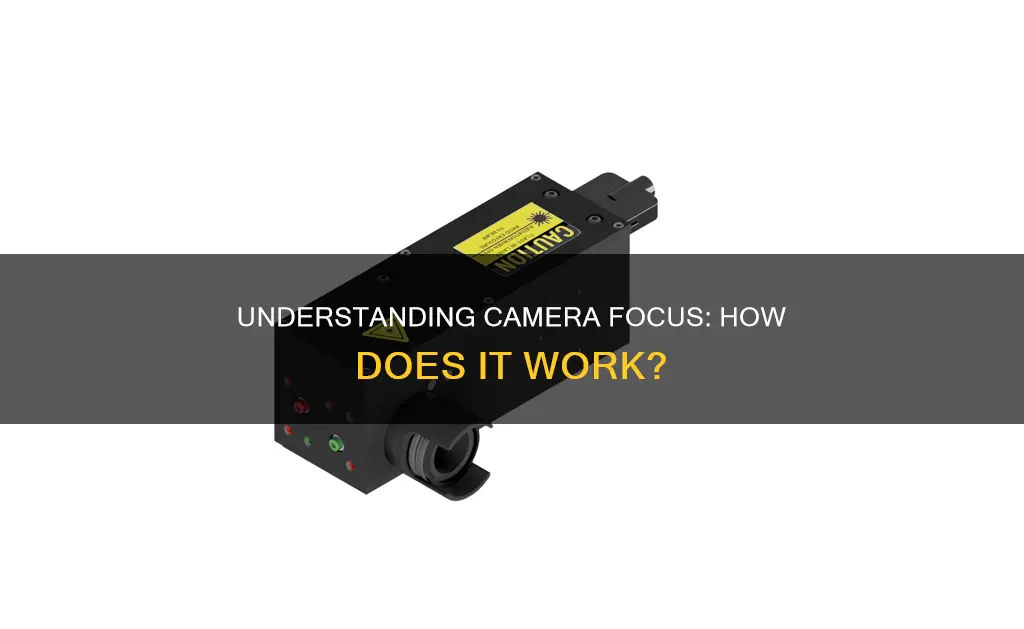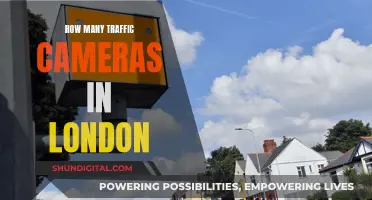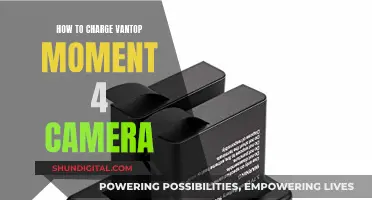
Understanding how focus works is key to getting a good photograph. When taking a photo, light is directed through the lens before reaching the recording medium. The lens, whether built-in or interchangeable, is made up of elements that focus the light. This can be done automatically or manually.
Autofocus refers to the mechanism that automatically moves the elements within the lens to achieve the best focus. This is done through a series of autofocus points that are visible through the viewfinder. The photographer or the camera itself selects a particular focus point to achieve focus.
There are two main types of autofocus systems: phase detection and contrast detection. Phase detection is commonly found in DSLR cameras and is very fast, making it great for tracking moving objects. Contrast detection is used in mirrorless cameras, point-and-shoot cameras, DSLRs in live view mode, and smartphone cameras. It is slower but more accurate, making it better suited for product or landscape photography.
Different camera focus modes suit different situations. AF-S (autofocus single) allows you to lock the focus on the subject, making it ideal for still and slow-moving scenes. AF-C (autofocus continuous), on the other hand, is better for fast-moving subjects as it automatically refocuses on the subject each time it moves. The third option is manual focus, where the photographer adjusts the focus ring of the camera to achieve the right focus. This is particularly useful when the camera has difficulty focusing or when taking a series of images where focus needs to remain constant.
| Characteristics | Values |
|---|---|
| Focusing method | AF-S, AF-C, manual focus |
| Focus modes | Single-point autofocus, dynamic-area autofocus, auto-area autofocus |
| Focus techniques | Autofocus, manual focus |
| Focus area modes | Single-point, dynamic area, auto area |
| Autofocus systems | Active AF, passive AF (phase detection, contrast detection) |
What You'll Learn

Manual focus vs autofocus
Manual focus is when the photographer manually sets the focus by adjusting the focus ring of the camera. It is less commonly used than autofocus but is particularly useful when the camera struggles to focus or when taking a series of images where focus needs to remain consistent.
Autofocus refers to the mechanism that automatically moves the elements within the lens to achieve the best focus. This is done through a series of autofocus points that are visible through the viewfinder. The camera or photographer selects a particular focus point, and the camera adjusts the lens until the image is deemed in focus.
The choice between manual focus and autofocus depends on the photographer's needs and shooting conditions. While autofocus is generally faster and more convenient, manual focus offers greater creative control and is more reliable in certain situations.
Advantages of Autofocus:
- Autofocus is generally quicker, although the speed varies depending on the camera and lens type. Sports-oriented equipment, for example, tends to be much faster.
- Autofocus has advancements such as tracking, which allows it to lock focus on a subject and track it through the frame. This is useful for capturing moving subjects.
- Autofocus systems have added features such as Eye AF, which detects the eyes of subjects and grabs focus.
Disadvantages of Autofocus:
- Autofocus systems depend on contrast to identify subjects, so they struggle in low-light conditions or when there is minimal contrast, such as in heavy backlight.
- Autofocus can be easily distracted by foreground objects, making it challenging to focus on something in the midground or background.
- Autofocus is not very precise, especially when trying to nail a specific point of focus, such as in portrait or landscape photography.
- Autofocus struggles when shooting at high magnifications, such as in macro photography, as it finds it difficult to determine the object of focus.
Advantages of Manual Focus:
- Manual focus offers greater creative control as the photographer determines the focus point.
- Manual focus is ideal for situations where autofocus may struggle, such as low light conditions, shooting through glass or fences, or when there are many objects in the scene.
- Manual focus is very precise, allowing photographers to carefully pick their point of focus from a chaotic scene.
- Manual focus can be more reliable in tricky situations because the photographer uses their eyes to direct the focusing.
Disadvantages of Manual Focus:
- Manual focus is generally slower than autofocus, making it less suitable for action or sports photography.
- Manual focus requires the photographer to choose the point of focus, which can be challenging in certain scenarios, such as shooting from the hip.
When to Use Autofocus vs Manual Focus:
Autofocus is recommended as the default option, with manual focus used in specific scenarios where autofocus struggles.
Use Autofocus When:
- Photographing wildlife, birds in flight, street subjects, or pets—essentially any moving subjects.
- You want a quick and convenient way to focus, especially in situations where timing is critical.
Use Manual Focus When:
- Doing macro or landscape photography, especially when there is a need to focus on a specific point or target a particular distance.
- There are many distracting foreground elements, such as snow, tree branches, or fences, that may confuse the autofocus system.
- You need to nail a precise point of focus, such as the eye in a portrait, and your camera is struggling to target it accurately.
- Shooting nightscapes or astrophotography, as there is usually not enough light for autofocus to work effectively.
- Dealing with a fast-moving scene, but you know where your subject will be in advance, allowing you to pre-focus.
Exploring VR Mode in Cameras: An Immersive Experience
You may want to see also

Autofocus modes
The four primary autofocus modes are Continuous, Single, Automatic, and Manual.
Continuous Focusing Mode
Continuous mode, also known as AI Servo AF (Canon) or AF-C (Nikon), is most useful for keeping moving objects sharp within the viewfinder as you track the object. As soon as you begin to depress the shutter release, the camera goes into action and begins to focus. The camera detects the subject's movements and refocuses accordingly to keep the object sharp. This mode uses a lot of battery power because it is continuously focusing and refocusing.
Single Shot Focusing Mode
Single-shot mode, also known as One-Shot AF (Canon) or AF-S (Nikon), represents single-focus capability. In this mode, when you depress the shutter release halfway, the camera focuses on the subject just once – there’s no continuous adjustment. This mode saves battery power and is ideal for subjects that aren't moving. However, this mode falls short when trying to capture something that's changing positions.
Automatic Autofocus Mode
The automatic autofocus mode, also known as AI Focus AF (Canon) or AF-A (Nikon), is a relatively new feature that has turned out to be quite useful. In this mode, the camera's focusing computer jumps back and forth between AF-C and AF-S (Nikon) or One-Shot AF and AI Servo AF (Canon) depending on the situation. This is the default autofocus mode on cameras that have this feature.
Manual Focusing Mode
Manual focusing mode is perhaps the most frustrating barrier between good and great photography. Achieving perfect focus requires using the distance measurements on the lens barrel and even perhaps measuring the distance from the lens to the subject with a tape measure. This will give you the most accurate focus point.
Other Autofocus Modes
In addition to the four primary autofocus modes, there are several other autofocus modes available on modern cameras, including:
- Full-Time Servo (AF-F) Focus Mode
- Pinpoint AF Mode
- Single-Point AF-Area Mode
- Dynamic AF-Area Mode
- Auto-Area AF Mode
- Group-Area AF Mode
- 3D-Tracking Mode
The Raw Camera Filter: Where Did It Go?
You may want to see also

Focus settings
Focus is the result of a combination of your lens aperture and light. Depending on how light rays converge into your lens and the aperture you've selected, different parts of your image will be in focus.
Aperture and Focus
Smaller apertures, such as f/8 to f/16, will force all the light coming from outside to pass through a tiny hole and concentrate on the image sensor. As a result, a bigger part of the image will be in focus. On the other hand, wider apertures, such as f/1.4 to f/4, will spread all the light rays onto a bigger part of the image sensor. Since the hole is now much bigger, you'll end up with an image that has a smaller "depth of field".
The aperture of your lens will determine how much light is let in and, as a consequence, how well you'll be able to focus.
On pretty much every camera model available on the market, you should have at least three choices when it comes to the focusing method: AF-S, AF-C, and manual focus. In other words, you'll have two different options (actually, more than two, but we'll talk more about that later) for autofocus, with the remaining one being the good old manual focus.
AF-S
AF-S is an autofocus mode that allows you to lock the focus on the subject you've chosen. From there, you can move and recompose the photo as you wish. The single-shot autofocus is an ideal way to capture still and slow-moving scenes. It is a faster way to focus on a subject, making it inherently quicker to capture a shot. AF-S works perfectly with street photography, portraits, and event photography, just to name a few genres. It's a good choice for scenes where you have the time to refocus between one shot and the next.
AF-C
AF-C fills the gaps of the single-shot autofocus. By choosing the continuous autofocus mode, your camera will automatically refocus on your subject each time it moves, as long as you keep the shutter button halfway pressed. This focusing method works well with fast-moving subjects. Given that you'll never lose focus on your subject, you can follow and track it without having to refocus every time you take a shot. Sports photography, action photography, and wildlife photography are just a few of the genres where continuous mode is a really popular choice for focusing and can make a huge difference to the sharpness of your final images.
Manual Focus
The last focusing method on this list happens to be the oldest one of them all: manual focus. In this case, there are no camera processors, no autofocusing motors, or any other external help. It will be just you and your ability to achieve the right focus to capture a perfectly sharp subject. Still life scenes are generally the situations that suit the use of manual focus. It works even better if you are able to use a tripod. Landscape, studio, and macro photography are some of the genres where manual focus shines. What do they have in common? These are all photography genres where you will have the time to check if you've managed to achieve the right focus and, if not, to refocus again.
Bridge Cameras: Capturing RAW Images
You may want to see also

Focus vs depth of field
Depth of focus is a lens optics concept that measures the tolerance of placement of the image plane (the film plane in a camera) in relation to the lens. It is sometimes referred to as "lens-to-film tolerance". Depth of focus can be defined as the distance over which the image plane can be displaced while a single object plane remains in acceptably sharp focus. It is typically measured in microscopic units such as fractions of a millimeter or thousandths of an inch.
Depth of field, on the other hand, is the distance from the lens in acceptable focus. It is dependent on the focus distance and is generally measured in macroscopic units such as meters and feet. Both depth of field and depth of focus increase with smaller apertures.
Depth of field is particularly important when considering where to focus in an image. It is influenced by the subject being photographed and the result you want to achieve. For example, if you want to achieve maximum bokeh, you would adjust your depth of field accordingly.
Manual focus is when the photographer manually adjusts the focus ring of the camera. Autofocus, on the other hand, refers to the mechanism that automatically moves the elements within the lens to achieve the best focus. This is done through a series of autofocus points that are visible through the viewfinder. The camera (or photographer) selects a particular focus point and this is used to achieve focus.
There are three methods of autofocus:
- Phase detection: This is the system most commonly found in DSLR cameras. It is very fast and therefore great for tracking moving objects.
- Contrast detection: This system is commonly used in mirrorless cameras, point-and-shoot cameras, and smartphone cameras. It is slower but more accurate, making it better suited to genres like product or landscape photography.
- Active focus: This works by bouncing an infrared beam off of whatever the lens is centred on and working out the distance it should focus on based on the reflected beam.
Different autofocus modes include:
- Single shot/single-servo focus mode: Only one focus point is used to determine focus and this does not change until you refocus.
- Continuous focusing/continuous-servo: Once a focus point is set, the camera continuously tries to monitor the distance of the subject from the camera and readjust as necessary for as long as the focus button is held down.
- Automatic autofocus mode: This is a cross between single shot and continuous focusing. The camera focuses on a single subject and only refocuses when the subject moves.
Understanding the relationship between focus and depth of field is critical to achieving the desired results in photography.
Trail Cameras: American-Made, Quality Assurance
You may want to see also

Common problems with focusing
Incorrect Settings
An obvious but often overlooked issue is forgetting to switch back to autofocus from manual focus. On some cameras, there may be an "AF/MF" switch on both the lens and the camera body. Another setting to check is the focus mode. In low-light conditions, the Servo modes are inaccurate and unreliable, so it is better to find the focus point yourself.
Minimum Focusing Distance
All lenses have a minimum focusing distance, and if you are too close to your subject, your camera will be unable to focus. Take a couple of steps back and try again.
Viewfinder Diopter
If you are having trouble seeing clearly through your viewfinder, check the diopter. Fine-tune the dial until you see a clear image in your viewfinder.
Low Contrast
Your camera uses contrast to determine the subject and needs it to be able to focus the lens. In low-light conditions, use the center focus point as it is the most accurate and strongest option. Look for areas of high contrast in the scene to help your camera gain accurate focus.
Flares
Flares reduce contrast and cause your camera to fluctuate between focusing on the darkest and brightest points in the image. Try using your hand or a lens hood to block out the light, then lock your focus.
Echomaster Camera: Where Are These Devices Manufactured?
You may want to see also
Frequently asked questions
Autofocus is when the camera automatically moves the elements within the lens to achieve the best focus. This is done through a series of autofocus points that are visible through the viewfinder. The photographer or the camera itself selects a particular focus point and this is used to achieve focus.
Autofocus works by making tiny adjustments to the lens. If the focus gets better, it repeats this in the same direction until it stops improving. Then it goes back and forth using smaller steps until it finds the best focus.
There are two main types of autofocus: phase detection and contrast detection. Phase detection is commonly used in DSLR cameras and is very fast, making it great for tracking moving objects. Contrast detection is commonly used in mirrorless cameras, point-and-shoot cameras, and smartphone cameras. It is slower but more accurate, making it better suited for product or landscape photography.







